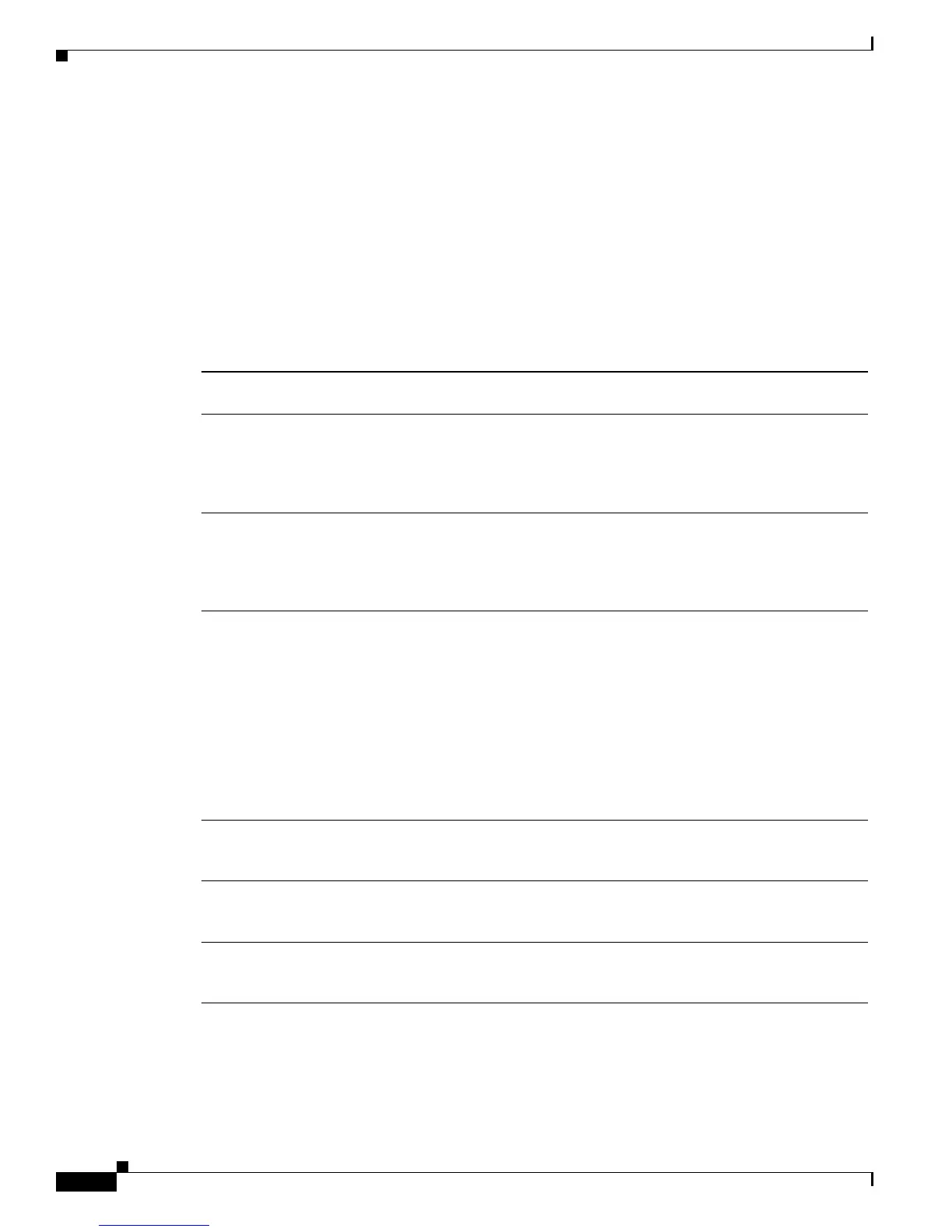6-6
Cisco 10000 Series Router Quality of Service Configuration Guide
OL-7433-09
Chapter 6 Policing Traffic
Single-Rate Color Marker for Traffic Policing
police Command (Single-Rate)
To configure traffic policing based on bits per second, use the police command in policy-map class
configuration mode. To remove traffic policing from the configuration, use the no form of this command.
By default, this command is disabled.
police [cir] bps [bc] burst-normal [be] burst-excess [conform-action action]
[exceed-action action] [violate-action action]
no police [cir] bps [bc] burst-normal [be] burst-excess [conform-action action]
[exceed-action action] [violate-action action]
Syntax Description
See Table 6-1 on page 6-3 for a description of each action you can specify in the police command.
For information about conforming, exceeding, and violating traffic, see the “Usage Guidelines for the
police Command” section on page 6-7
cir (Optional) Committed information rate (CIR). Indicates an average rate at
which the policer meters traffic. CIR is based on the interface shape rate.
bps Specifies the average rate in bits per second (bps). Valid values are from
8,000 to 2,488,320,000 bps. If you only specify police bps, the router
transmits the traffic that conforms to the bps value and drops the traffic that
exceeds the bps value. For information on how the router calculates the
policing rate, see the
“Policing Rate Granularity” section on page 6-25.)
bc burst-normal (Optional) Normal or committed burst (bc) size used by the first token
bucket for policing. The burst-normal specifies the bc value in bytes. Valid
values are from 1 to 512,000,000. The default is 9,216 bytes. For more
information, see the
“Committed Bursts and Excess Bursts” section on
page 6-21.
be burst-excess (Optional) Excess burst (be) size used by the second token bucket for
policing. The burst-excess specifies the excess burst in bytes. Valid values
are from 0 to 1,024,000,000 bytes. The default is 0. You must specify
burst-normal before you specify burst-excess. For more information, see
the
“Committed Bursts and Excess Bursts” section on page 6-21.
Note When the be value equals 0, we recommend that you set the egress
bc value to be greater than or equal to the ingress bc value plus 1.
Otherwise, packet loss can occur. For example:
be = 0
egress bc >= ingress bc + 1
conform-action action Specifies the action to take on packets that conform to the rate limit. The
default action is transmit. You must specify burst-excess before you specify
the conform-action.
exceed-action action Specifies the action to take on packets that exceed the rate limit, but not the
PIR. The default action is drop. You must specify the conform-action
before you specify the exceed-action.
violate-action action (Optional) Specifies the action to take on packets that continuously exceed
the PIR rate limit. The default action is the same as the exceed-action. You
must specify the exceed-action before you specify the violate-action.

